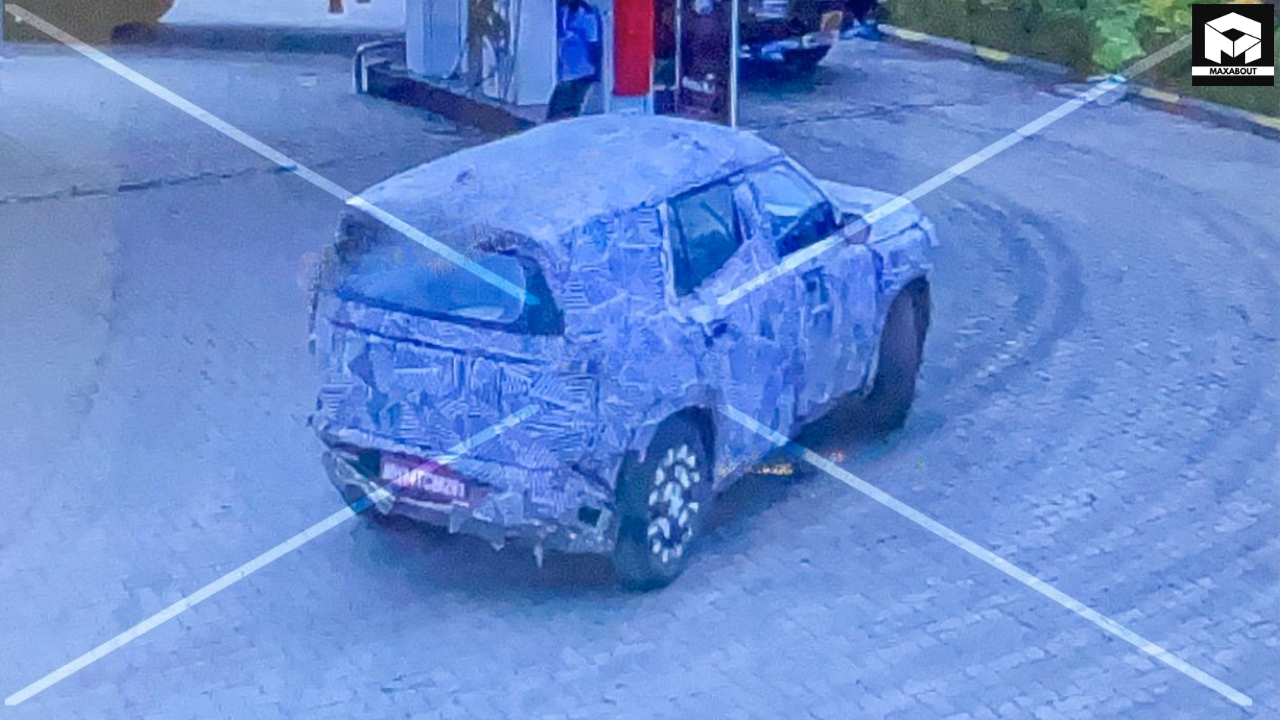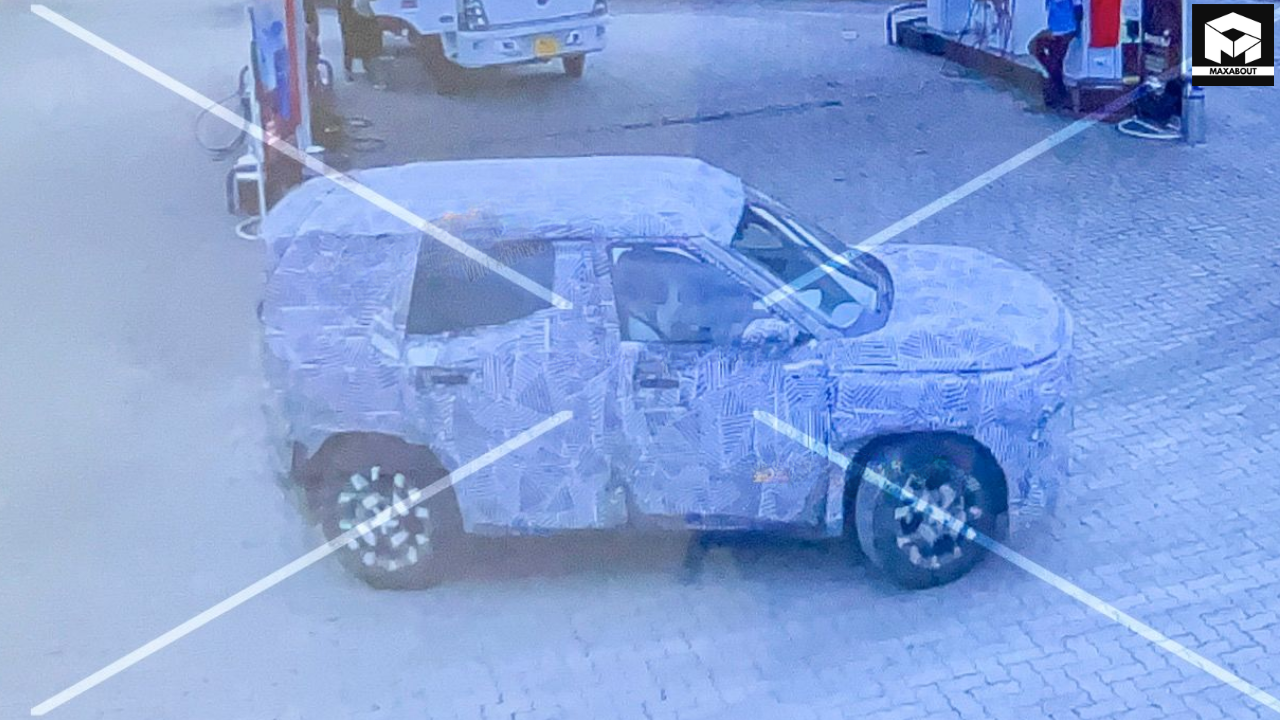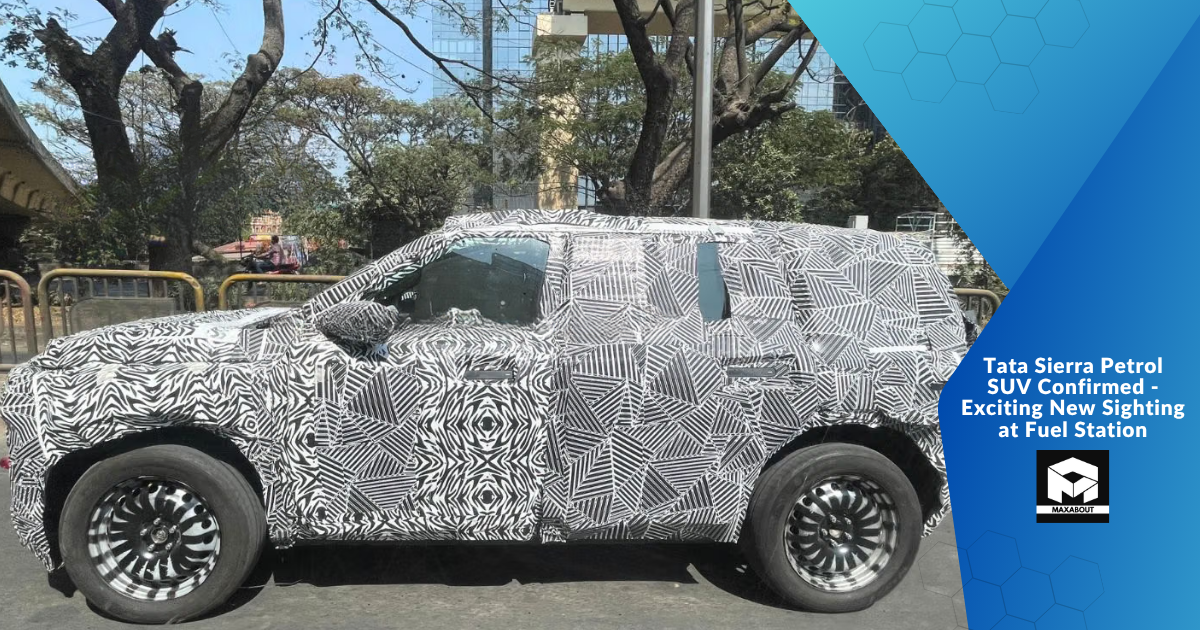Introduction
The automotive world is buzzing with excitement as the iconic Tata Sierra prepares for its grand comeback. In what appears to be a significant development, the petrol variant of the upcoming Tata Sierra SUV has been spotted at a fuel station, confirming what many enthusiasts had been hoping for – the new Sierra will indeed offer a conventional internal combustion engine alongside its electric variant.
Having followed Tata's developments closely over the years, I can say this sighting is particularly significant. When Tata first showcased the Sierra concept at the 2020 Auto Expo, it generated tremendous nostalgia and excitement among automotive enthusiasts. The Sierra nameplate carries strong emotional connections for many who remember the original boxy SUV with its signature glass windows that made it stand out in the 1990s.
This latest sighting gives us concrete evidence that Tata is adopting a dual-powertrain strategy for the Sierra, catering to both traditional fuel users and those ready to embrace electrification. Let's dig deeper into what this means and what we can expect from the upcoming Sierra.
The Sierra Spotted: What We Know

According to reports from reliable automotive sources, a camouflaged test mule of the Tata Sierra was recently spotted at a fuel station. Despite the heavy disguise, several distinctive design elements were visible that confirmed its identity. The SUV retained the iconic silhouette that Sierra fans would instantly recognize, albeit with modern interpretations.
The test vehicle appeared to be filling up with petrol, which confirms that Tata Motors is indeed developing a conventional internal combustion engine (ICE) variant alongside the previously announced electric version. This aligns with Tata's current strategy seen across their lineup where models like the Nexon and Punch are offered with both ICE and electric powertrains.
Based on industry observations and Tata's current engine portfolio, we can reasonably expect the Sierra to utilize either the 1.2-liter turbo-petrol engine or the more powerful 1.5-liter turbocharged petrol unit that's reportedly under development. The company typically offers these powertrains across multiple models to achieve economies of scale.
Design Elements Visible Despite Camouflage
Though heavily disguised, several design elements were discernible on the test mule:
- The distinctive greenhouse area reminiscent of the original Sierra
- Muscular wheel arches suggesting a commanding stance
- What appears to be an evolved version of Tata's humanity line grille
- Split headlamp setup that's becoming a signature across Tata's newer models
- Upright tailgate design staying true to its SUV credentials
The overall silhouette suggests that Tata has managed to honor the legacy of the original Sierra while adapting it to contemporary design sensibilities and regulatory requirements.
Tata Sierra: Dual Powertrain Strategy
This fuel station sighting confirms what many industry analysts have been speculating – Tata Motors is planning a multi-powertrain approach for the Sierra. This strategy makes perfect sense in the current automotive climate where markets are in transition.
The ICE variant spotted refueling will likely cater to customers in regions with limited charging infrastructure or those who frequently drive long distances. Meanwhile, the electric variant showcased earlier would appeal to urban users and early EV adopters.
Expected Powertrain Options
Based on Tata's current engine lineup and development patterns, the Sierra could potentially offer:
- Petrol: 1.2L turbocharged engine (similar to Nexon) or the rumored 1.5L turbocharged unit
- Diesel: While not confirmed, the 1.5L diesel from Nexon could also be adapted for the Sierra
- Electric: Advanced Ziptron technology with an estimated range of 400-500 km
The petrol variant would likely be paired with both manual and automatic transmission options, which has become standard practice across Tata's SUV lineup. According to industry trends, we might also see mild hybrid technology integrated with the petrol powertrain to improve efficiency and meet stricter emission norms.
Positioning in Tata's SUV Lineup
The Sierra's positioning in Tata's expanding SUV portfolio is particularly interesting. Based on its expected dimensions and features, the Sierra is likely to slot above the Nexon but below the Harrier and Safari in terms of pricing and positioning.
This would put the Sierra in direct competition with models like the Hyundai Creta, Kia Seltos, Maruti Grand Vitara, and Toyota Urban Cruiser Hyryder. It's a fiercely contested segment that accounts for significant volumes in the Indian market.
Market Significance
For Tata Motors, the Sierra represents more than just another SUV. It's a revival of a beloved nameplate that could help the company tap into both nostalgia and the growing premium mid-size SUV segment. The company's strategy of offering multiple powertrain options aligns perfectly with the transitional phase the automotive industry is currently experiencing.
Looking at market trends, the mid-size SUV segment has shown remarkable resilience even during economic downturns. By offering both ICE and electric variants, Tata is effectively future-proofing the Sierra while ensuring it has immediate market relevance.
Expected Features and Technology
While specific feature details remain under wraps, we can make educated predictions based on Tata's recent product launches and the positioning of the Sierra. The vehicle is expected to come loaded with modern amenities and safety features to compete effectively in its segment.
Interior and Comfort Features
Based on Tata's recent product strategies, we can expect the Sierra to offer:
- Large touchscreen infotainment system with wireless Apple CarPlay and Android Auto
- Digital instrument cluster similar to that seen in the Harrier and Safari
- Panoramic sunroof, which has become almost mandatory in this segment
- Ventilated front seats and premium leatherette upholstery
- Wireless charging pad and multiple USB ports including Type-C
- Auto climate control with rear AC vents
Safety and Driver Assistance
Given Tata's strong focus on safety across its portfolio, the Sierra is likely to offer:
- 6 airbags as standard (ahead of upcoming regulations)
- Electronic Stability Program (ESP) with various terrain modes
- Advanced Driver Assistance Systems (ADAS) features like autonomous emergency braking and adaptive cruise control
- 360-degree camera system for easier parking and maneuvering
- ISOFIX child seat mounts and three-point seatbelts for all passengers
The Sierra will almost certainly aim for a 5-star Global NCAP rating, continuing Tata's commitment to vehicle safety that we've seen with models like the Nexon and Punch.
Launch Timeline and Expected Pricing

According to industry sources and based on the current testing phase, the Tata Sierra is expected to launch in the Indian market sometime in late 2023 or early 2024. The appearance of test mules at fuel stations suggests that the development is in advanced stages.
As for pricing, while official figures are not available, the Sierra is likely to be positioned competitively in the mid-size SUV segment. Based on Tata's typical pricing strategy and segment positioning, we can expect the petrol variant to start around ₹10-11 lakh (ex-showroom), while the top-end variants could go up to ₹18-19 lakh.
The electric variant, when launched, would command a premium over the ICE version, potentially starting from ₹14-15 lakh, in line with the price differential we see between Nexon and Nexon EV.
Frequently Asked Questions
When will the Tata Sierra be launched in India?
Based on the current testing phase and industry reports, the Tata Sierra is expected to launch in late 2023 or early 2024. The petrol variant might debut first, followed by the electric version.
Will Tata Sierra have a diesel engine option?
While the spotted test mule confirms a petrol variant, there's no official confirmation about a diesel option yet. However, considering Tata's current lineup strategy, they might offer their 1.5L diesel engine in the Sierra as well.
How will the new Sierra differ from the original model?
The new Sierra will be a modern interpretation of the iconic original, with contemporary design, advanced features, and powertrain options including an electric variant. While it will pay homage to the classic model's design elements, it will be built on a completely new platform with modern technology.
Which cars will compete with the Tata Sierra?
The Tata Sierra will likely compete with mid-size SUVs like the Hyundai Creta, Kia Seltos, Maruti Grand Vitara, Toyota Urban Cruiser Hyryder, and the lower variants of MG Astor.
Conclusion
The sighting of the Tata Sierra's petrol variant at a fuel station marks an important milestone in the revival journey of this iconic nameplate. It confirms Tata Motors' practical approach of offering multiple powertrain options to cater to diverse customer needs during this automotive transition period.
The Sierra's comeback represents more than just another SUV launch – it's a blend of nostalgia with future-ready technology. By offering both conventional and electric powertrains, Tata is ensuring the Sierra appeals to both traditional automotive enthusiasts and forward-looking consumers embracing electrification.
As the launch approaches, we can expect more details to emerge about this highly anticipated model. What's clear is that Tata Motors is pulling out all stops to ensure the new Sierra lives up to its legendary status while setting new benchmarks in its segment. For SUV enthusiasts and Tata fans alike, the wait for the Sierra's return appears to be well worth it.

